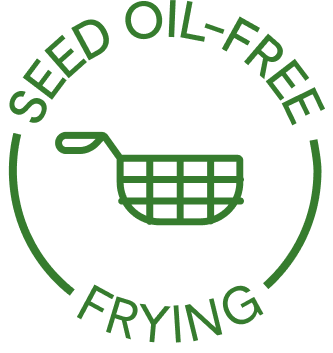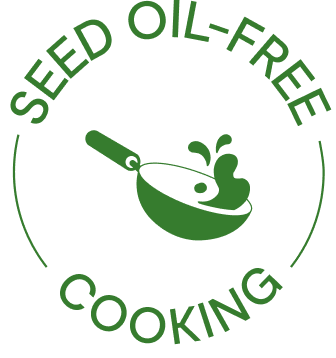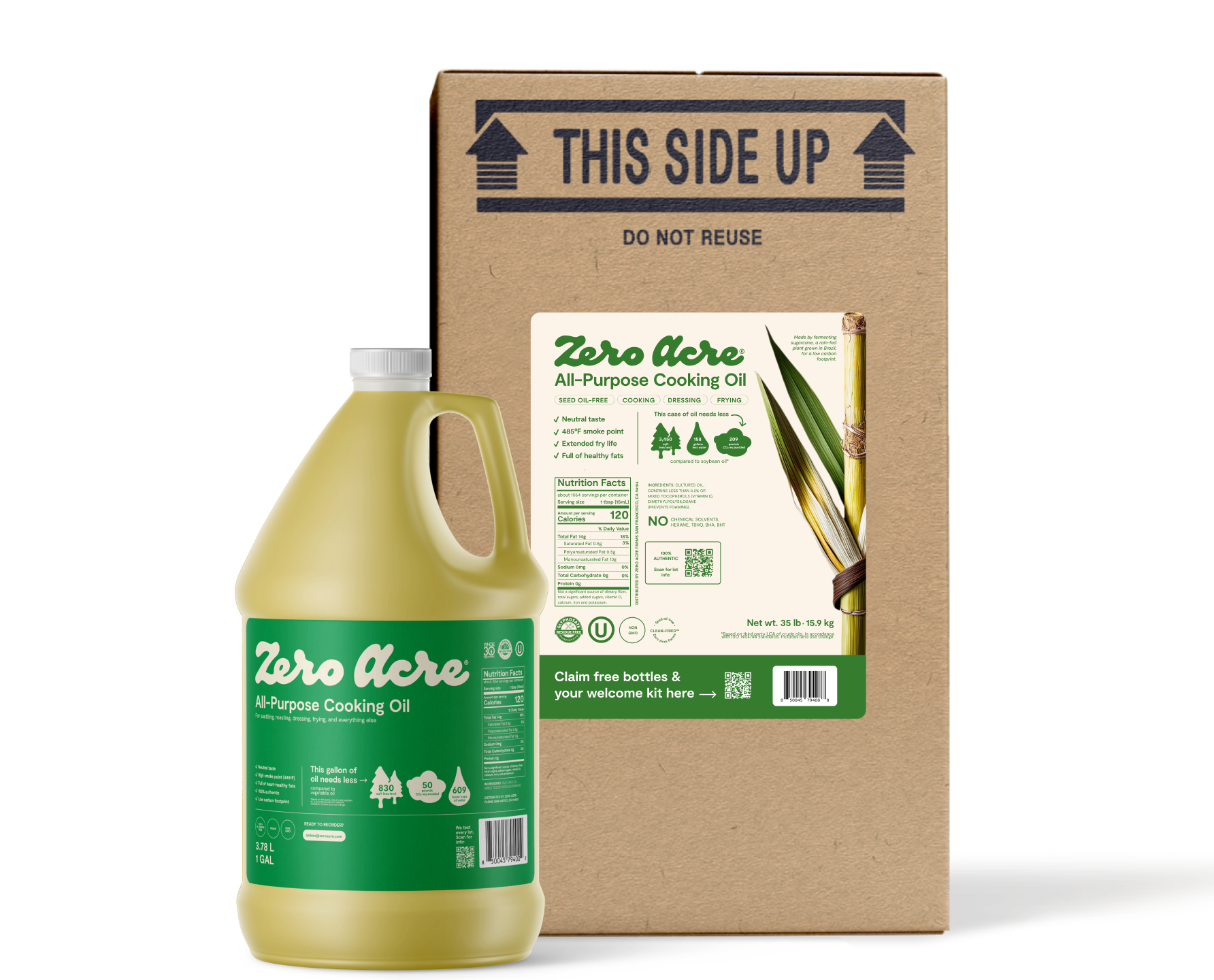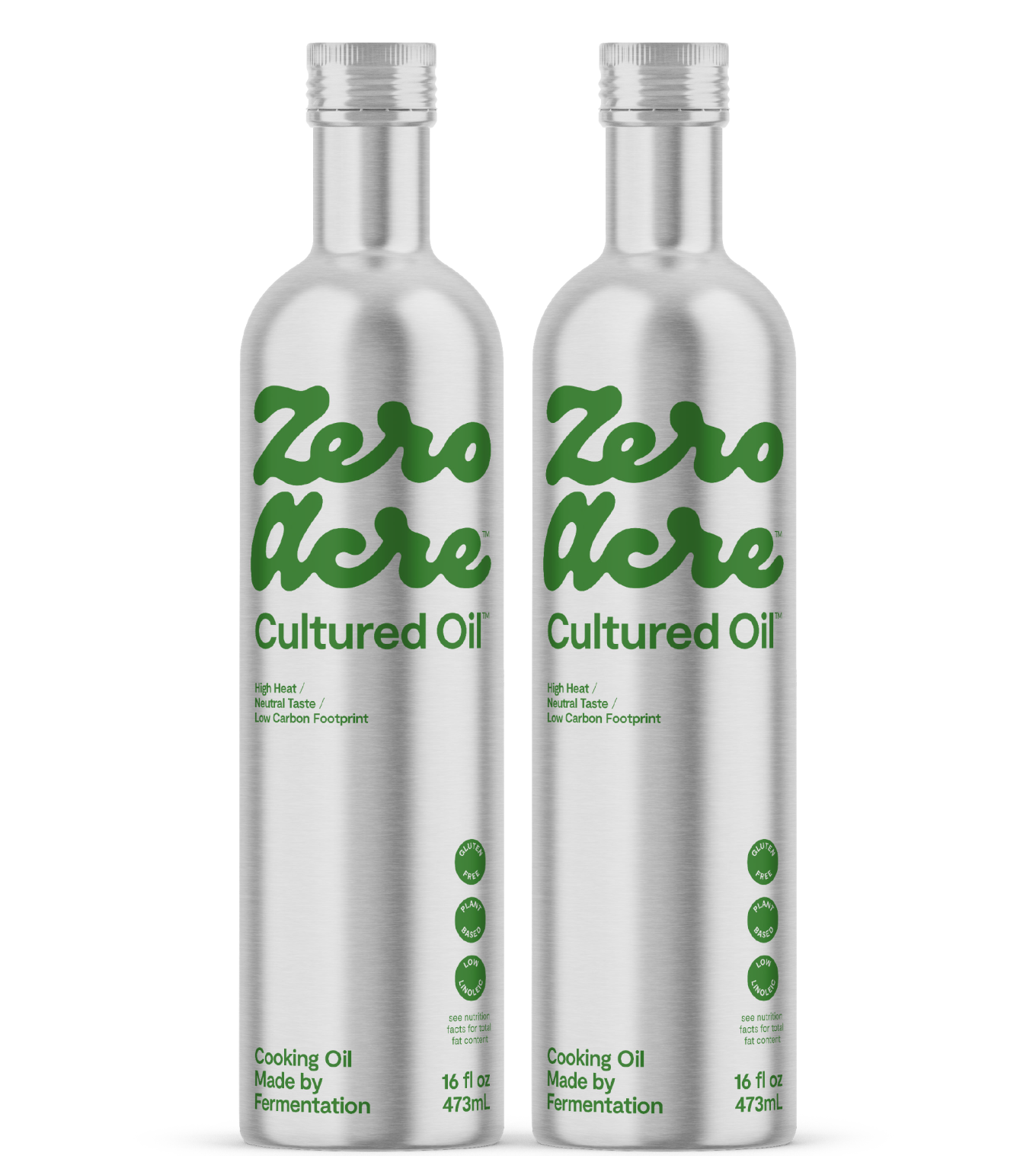WRITTEN BY: Sabrina Tillman
Article at a Glance
When sourcing healthy travel snacks, be mindful of dietary restrictions or allergies, nutrient content, shelf life, and convenience.
Our list of 18 easy, healthy travel snacks can be prepared in advance to bring with you. We walk you through how to prep and pack them so they’re ready when you are.
When snack prep isn’t an option, our curated list of best, better, and good brands can help you grab and go.
Introduction
Healthy travel snacks aren’t just for kids. Sometimes life gets too busy to sit down to eat a proper meal, flight delays and traffic jams happen, and arriving in new time zones can mean grumbling stomachs at inopportune times. When you’re on a road trip, a healthy travel-ready snack can save you from loading up on gas station hot dogs or Cheetos from a vending machine.
Unfortunately, fake cheese powder isn’t the only thing you’ll need to avoid when you’re on the road. Vegetable oils, also known as seed oils, top the ingredient lists of most snack options, whether you’re at a roadside pitstop or an airport snack kiosk.
Yes, it can take a little more foresight to shop for healthy travel snacks and, in some cases, to prepare them. And, yes, fresh fruits and veggies are at the top of most lists of portable, healthy snacks. But those shouldn’t be your only go-tos when you’re avoiding inflammatory seed oils and other nasty additives.
Plus, it may just be easier than you think to find healthy (or healthier) snacks at any grocery store or major airport – you just need a little culinary inspiration and a few brand names in mind to keep it quick and easy.
We’ll show you how to shop and prep so you can have healthy, balanced snacks on hand any time at home, not just when you travel. Our recommendations for best seed-oil free snacks include fresh foods, high-protein picks, and sweet and savory items so everyone is happy. Pack them up to tote along or cruise our best-better-good list when you need to buy something ready-made.
What to Consider When Choosing Healthy Travel Snacks
When sourcing healthy snacks, consider the following:
Dietary restrictions and allergies
Nutrient content
Shelf life
Portability and convenience
Avoid snacks that contain anything you can’t, don’t, or won’t eat. You likely know your triggers, so scrutinize the ingredients label. If you’re allergic to an ingredient, make sure to check any packages and containers for notices about potential cross-contamination with ingredients that commonly cause allergic reactions such as gluten or peanuts.
You might want to give preferential focus to ingredient lists vs. nutrition fact labels. The FDA doesn’t require 100% accuracy on nutrition labels; for example, calories, sugar, sodium, cholesterol, total fats and saturated fats can be up to 20% inaccurate. “FDA's continuing policy since the 1970s assigns the manufacturer the responsibility for assuring the validity of a product label's stated nutrient values,” says the agency’s guide to the food industry about nutrition labels [*].
Other than that, try to avoid seed oils, and beware that there are 61 different names for sugar on food labels – not to mention the fact that food manufacturers add sugar to 74% of packaged foods sold in grocery stores, gas stations, and vending machines [*,*].
Tips for Packing and Storing Healthy Travel Snacks
If you’re packing kid snacks for activities or need to grab something quickly for yourself on the way out the door, try to plan ahead. Stock your pantry with no-prep snacks like:
Seed oil-free, low-sugar protein bars
All-natural nut butters
Raw or dry-roasted nuts and seeds (check the labels for added seed oils)
Snacks made with coconut, avocado, or olive oils
Tinned wild salmon, sardines, or tuna
Protein powder that can be shaken up with water in a blender bottle
Pre-packaged olives
For perishable snacks that require refrigeration, keep freezer packs at the ready. Pack perishables with frozen packs in an insulated bag.
When you get home from a grocery run, take a few minutes to meal prep snacks:
Wash and portion cut veggies with slices of cheese and pack them in ready-to-go reusable containers.
Wash fruit and put into containers with mixed nuts or pumpkin seeds; pack these in ready-to-go reusable containers.
Put a serving of plain Greek yogurt into reusable containers or small mason jars. In separate small containers, pack toppings such as fruit, walnuts or slivered almonds, chia or hemp seeds, and unsweetened shredded coconut.
Portion non-perishable snacks into single-serve resealable bags or reusable containers, and keep them visible on your shelves so you can grab them when you need them.
18 Healthy Snack Options for Travel
If you’re avoiding seed oils and a lot of added sugar, you’ll want tasty high-protein and fiber-rich snack recommendations (which can keep you feeling satisfied for longer) [*]. Our travel-friendly healthy snack options feature something for everyone.
Fruits and Vegetables
Pre-cut fruits and veggies: This one tops our list because raw fruits and veggies are as convenient and portable as nature-made snacks can be, and they’re filled with antioxidants, vitamins, and fiber.
Avoid browning on apple and pear slices by soaking them in half a teaspoon of kosher salt and one cup of water (rinse any salty flavor off with tap water before serving).
Store cut veggies in water in mason jars or airtight containers in the fridge to stay fresher for longer. Change the water every few days for longer storage.
To keep berries from going moldy too quickly, soak them in three cups of water and one cup of white vinegar for five to 10 minutes. Drain and rinse the berries in a colander before storing in the refrigerator.
Dried fruits: Tread lightly here, as the lack of moisture concentrates the sugars in the fruit. Less water also means you’ll feel less full eating dried fruit compared to fresh, and calories can add up fast. A small serving packs polyphenols (an antioxidant) and fiber, but beware of brands that add sugar, seed oils, and preservatives. To help with satiety, combine some dried fruit with nuts to make a basic seed oil-free trail mix.
Dried seaweed: Enjoyed by Asian populations for centuries, seaweed is now recognized by Western nutrition research as a therapeutic powerhouse. Some seaweeds contain 10 to 100 times more minerals and vitamins than land-dwelling plants and animals [*]. Interestingly, one research review found that countries where seaweed is eaten regularly show fewer instances of obesity and diet-related disease [*]. Dried seaweed has a slightly mineral, briny flavor and packs a satisfying crunch. Brands that use olive oil or no oil include Seasnax, One Organic, and Sea Castle.
Fruit and vegetable chips: Beware of the health halo around packaged fruit and veggie chips. Some brands add seed or vegetable oils, sugar, and additives. Look for single-ingredient freeze-dried fruit (they have a crisp, more brittle bite), fruit and veggie chips made with coconut, avocado, or olive oils. You can also make your own fruit and veggie chips at home with Zero Acre oil, seasonings, and an oven:
Use a mandolin for thin, even slices of root vegetables or fruit like apples, place the slices in a single layer on clean kitchen towels and dust with salt. Let sit for 15 minutes then dab moisture off with a towel.
Place sliced produce on baking sheets lined with parchment paper or silicone mats in a single layer; brush with Zero Acre oil, season, and bake at 300ºF for 15 minutes.
After 15 minutes, switch oven racks and rotate the pans, then bake for another 15 minutes. Rotate pans again and bake for another 5–10 minutes, or until chips are golden and crisp; some pieces may be ready faster than others, so remove those that are done first.
Nuts and Seeds
Raw nuts and seeds: These provide vitamins, minerals, fiber, protein, and unsaturated fats, and the combo of fat, fiber, and protein help keep you fuller for longer. To keep calories and portions in check, learn how many nuts and seeds make up one serving and portion out the amount you eat to align with your nutritional needs. A nutritional underdog, walnuts are the only nut that contain omega-3 fatty acids [*]. Nuts and seeds that pack the most protein include peanuts, almonds, pistachios, cashews, as well as pumpkin, chia, flax, hemp, sunflower, and sesame seeds [*].
Nut butter packets: Stick to the brands whose ingredients include simply the nut or seed and salt (no added oils or sugar). You can also make your own healthy nut butter at home to ensure you have control over the ingredients and potentially save on the expense of premium, store-bought varieties.
Trail mix: Nuts and seeds provide the foundation, and dried or freeze-dried fruit add flair to trail mix. Making your own trail mix gives you more nutritional control and may be more cost-effective if you buy the ingredients in bulk. If you prefer to purchase a premade mix, scrutinize ingredient labels and accept that you pay for what you get in this category. Avoid things like fried sesame sticks, yogurt-covered pretzels, M&Ms, and butterscotch chips combined with nuts and dried fruits – these are all seed oil and sugar bombs.
Protein-Rich Snacks
Jerky and meat sticks: This roughing-it-in-the-outdoors classic has received a culinary upgrade in the past few years. Now available without added sugar, chemicals, nitrates, and excess sodium, you have access to brands like Epic Provisions, The New Primal, and Chomps. Some companies now offer salmon, turkey, mushroom, and even vegan options (Louisville Vegan Jerky uses extra virgin olive oil).
Hard-boiled eggs: Easy for make-ahead snacks, hard-boiled eggs contain about six grams of protein per egg plus phosphorus, magnesium, choline, potassium, and folate [*]. To avoid foul-smelling sulfur, avoid overcooking the eggs. A fool-proof method: Place eggs in a pot just big enough to hold them in one layer. Pour just enough cold water on top to cover and bring them to a rolling boil. Let boil for one minute, then take them off the heat and let sit for about 20 minutes.
Roasted chickpeas: A cheap plant-based source of protein, fiber, and quite a bit of calcium and magnesium, chickpeas have a creamy mouthfeel and neutral flavor [*]. Roast them in Zero Acre oil or olive oil with some salt and paprika and they will pop pleasantly in your mouth with every bite.
Hummus and veggies or crackers: Our hero legume, the chickpea, stars in another snack combo. Pair an olive oil-based hummus with celery, baby carrots, jicama, bell pepper strips, cucumber coins, cauliflower or broccoli florets. Crackers made without seed oils make a crunchy counterpart to the yielding, creamy hummus; brands to explore: Wisecrackers Avocado Oil & Sea Salt, Hu, Fat Snax, Flackers, and Every Body Eat.
Plain Greek yogurt: Tart, creamy, and probiotic-rich, plain Greek yogurt contains 15 grams of protein and 170 mg of calcium in six ounces [*]. Unadorned, it’s an acquired taste, but you can add fresh fruit, a touch of any natural sweetener you like, a sprinkling of dried coconut or trail mix.
Plain cottage cheese: Same song as Greek yogurt, different verse. Classic diner diet food, one cup of cottage cheese contains 25 grams of protein, 187 mg of calcium, and plenty of potassium and phosphorus [*]. The texture isn’t for everyone, but the flavor is tart and creamy like yogurt; dress it up similarly with fresh fruit, any natural sweetener you enjoy, or add savory spices and herbs.
Canned tuna, salmon, sardines: Pick fish packed in water or olive oil for a briny, savory bit of protein that’s rich in omega-3s. Spoon onto seed oil-free crackers, rice cakes, or eat straight out of the tin.
Savory snacks
Rice cakes: Retro diet food is back. Consider these crispy pucks as mini platters to top with salty, savory combos like roasted red pepper hummus with sliced black olives, a piece of sharp cheddar and sliced hard-boiled eggs, or sweet and salty combos like peanut butter with fresh raspberries, and cottage cheese with cinnamon-dusted apple slices.
Popcorn: Pop with Zero Acre oil and season simply with salt, or get fancy and add truffle salt, parmesan cheese, nutritional yeast, or try cayenne pepper and allulose or maple syrup for a sweet-spicy mix. Portion 1–2 cups of popcorn into resealable bags or reusable containers. Do the same with already-popped corn; brands that use avocado, olive, or coconut oil include LesserEvil, Good & Gather Organic Olive Oil, Trader Joe’s Organic Popcorn with Olive Oil.
Sweet snacks
Dark chocolate: Health nuts rejoice to pop a small square of dark chocolate – rich in polyphenols, flavonoids, vitamins, and minerals. True, but several of these health-boosting nutrients get lost during the processing of dark chocolate [*]. Buy dark chocolate fortified with antioxidant-rich fruit like blueberries, spices like cinnamon, or probiotics. You can also pair chopped dark chocolate with nuts and dried fruit in trail mix, or melted and mixed with oats, seeds, a touch of maple syrup, and shredded coconut and baked in a low oven to make granola.
Cookie dough balls: No need to sneak raw cookie dough anymore. Add protein powder to safe-to-eat-raw cookie dough and it’s healthier! Make an easy at-home version by mixing together 2 cups oat flour, ⅓ cup protein powder, ½ cup melted and cooled nut butter, 4 tablespoons maple syrup, 2 teaspoons vanilla extract, ½ cup milk of choice, and ¼ cup mini chocolate chips. Roll 2 tablespoons of the combined cookie dough into balls with your hands until the mix is gone. Store in an airtight container in the refrigerator [*].
Best, Better, Good List of Airport & Convenience Store Snacks
If you can’t find a protein box at Starbucks, a fruit cup or veggies with dip at a shop near your gate, the following grab-and-go packaged items can suffice. Do your best and don’t sweat it too much.
Bars
Best: RxBar, Larabar
Better: Go Macro, ALOHA
Good: Bobo’s, Simple Mills Almond Flour Bars
Chips
Best: Bare Snacks, Boulder Canyon, Kettle Brand with Avocado Oil
Better: Barnana Organic Plantain Chips, Lesser Evil Paleo Puffs
Good: The Good Crisp, Jackson’s Tortilla Chips
Chocolate
Best: Hu, Lindt Excellence, Alter Eco
Better: Skinny Dipped, Chocolove, Green & Black’s
Good: Unreal, Theo
Sweets
Best: Walkers Shortbread
Better: Pepperidge Farm Farmhouse Thin & Crispy
Good: Rip Van Wafers, Tate’s Bake Shop, HighKey
The Takeaway
When you’re moving fast, out all day, or traveling, it helps to have healthy travel snacks on hand so you’re not ravenous by midday. Real-food snacks you can prep in advance and bring along for the ride are preferable, but prepared food options without seed oils and excess added sugars exist. Do your best to read ingredient labels before you run around the world so you know what brands to look for in a pinch. Pick the good, better, or best option available where you are and continue on your way.

The Big List of Seed Oil-Free Snacks
Choosing quality seed oil-free snacks means reading labels, which can be a hassle. Here’s a full list of seed oil-free snacks so you don’t have to think about it.

The Ultimate Seed Oil-Free Shopping List: 65+ Must-Haves
This seed oil-free shopping list has everything you need for a well-stocked kitchen, from cooking ingredients to ready-to-eat meals, snacks, dips, and more.
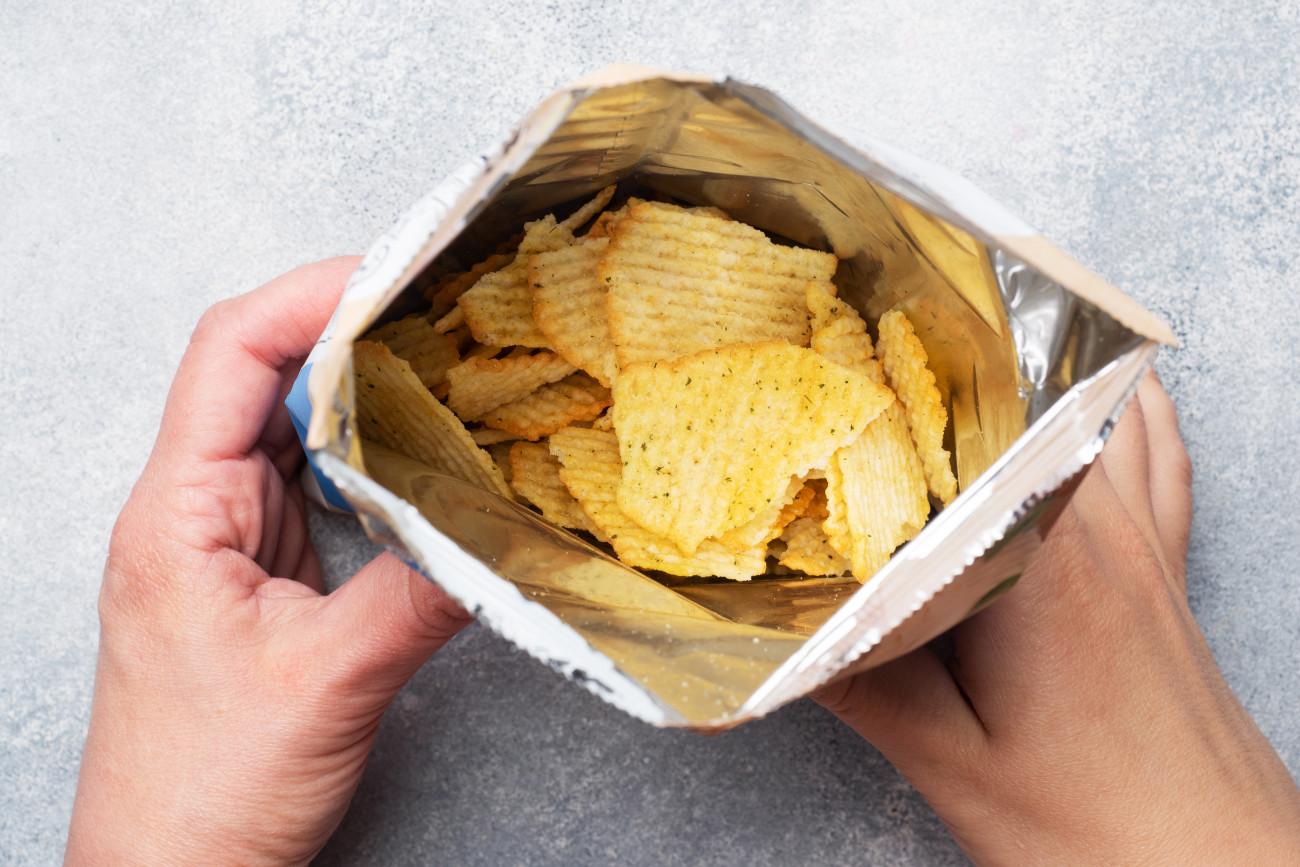
Seed Oil-Free Chips: The Best Potato, Tortilla, and Grain-free Chips You Can Buy
You might avoid chips because they’re deep-fried, but seed oils may be a bigger concern. There are satisfying seed oil-free options for potato chips, tortilla chips, grain-free chips, and chip alternatives.

